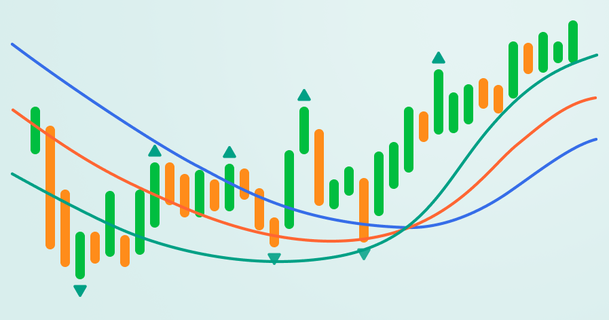
Bill Williams is the creator of some of the most popular market indicators: Awesome Oscillator, Fractals, Alligator, and Gator.

Don’t waste your time – keep track of how NFP affects the US dollar!
Data Collection Notice
We maintain a record of your data to run this website. By clicking the button, you agree to our Privacy Policy.

Beginner Forex Book
Your ultimate guide through the world of trading.
Check Your Inbox!
In our email, you will find the Forex 101 book. Just tap the button to get it!
Risk warning: ᏟᖴᎠs are complex instruments and come with a high risk of losing money rapidly due to leverage.
71.43% of retail investor accounts lose money when trading ᏟᖴᎠs with this provider.
You should consider whether you understand how ᏟᖴᎠs work and whether you can afford to take the high risk of losing your money.
2022-08-26 • Updated
Information is not investment advice
Forex trading - an ecosystem of multiple brokers, traders, and all the information flow in between - exists due to one motivation: earning money. The crucial thing to earn is to predict market moves correctly. Here lies the cornerstone question: is there any way to be always correct in predicting the market? The answer is “no”, as this question is semantically the same as predicting the future. No one can do it, although at times some claim to have invented an almost 100% reliable instrument to foresee what happens next.
However, some approaches and methodologies have already proved to be a relatively reliable source of correct predictions. Technical analysis and its indicators are certainly one of them. Let’s have a broader look at it to understand what may be the most effective way to use it.
Several generations of professionals coming from different academic circles have elaborated various mathematical models, which gave birth to multiple algorithms projecting future market moves. These algorithms allow us to set our market orders, levels, stop loss and all other marks as precisely as 0.00001 can be. This, in turn, gives place to scalping, intraday trading and all other approaches to trade, where smart traders can squeeze their fortunes trading cents within split seconds.
Fundamental analysis provides only one approach: real-life information. On the contrary, technical indicators provide a rich variety to choose from. Oscillators, volumes, trend indicators, and other types and their combinations provide an opportunity to customize the chosen method as much as a trader needs. Therefore, there is no need to force oneself to get used to a given way of market interpretation: a trader may choose any number of indicators that he/she understands best and customize them to feel most confident reading the market. This variety of choices allows traders to choose the indicators they like and decide on a general trade strategy, leaving the “small” decisions to the chosen indicators.
The market is made by people, people are made of emotions, hopes, and desires. It is not a rare event when a trader suffers losses due to false hopes for a market correction or a simple panic on some unexpected news releases. Digits don’t have feelings, so they don’t fall into wishful thinking and don’t have a heart attack when the market slumps. Using technical indicators may help filter out this emotional element in trade decisions and hence take a big part of psychological responsibility off the trader’s shoulders.
So far from this perspective, a trader has a multitude of available instruments to sleep tight and make sure there is no flaw in his indicator-backed market evaluation. But there is recoil to each of the strengths we have listed.
All the mathematical and statistical methods take the data from the past and project it into the future. The past events or their digitalized trends can never contain a 100% probability clue of what happens next. This is the fundamental flaw of this approach. On top of that, even with the highest possible probabilities, any indicator always lags behind the current moment, but the market is alive and never waits. So it takes a moment for an indicator to decide what to reflect in the chart, then it takes another moment for a trader to decide on what he wants to do with this indicator chart. Within these two moments, anything can happen in the market to invalidate the market interpretation that seemed obvious just a while ago.
There is an obvious backfire with a variety of choices: it creates confusion. Some may think that the more indicators you use, the more reliable will be your market evaluation. That is not true: indicators very often contradict each other and using a lot of them together may disorient even a professional market observer. Moreover, to be able to choose an indicator, one needs to have a certain degree of knowledge already. Otherwise, there are dozens of indicators available with any trading terminal, some of which are pretty complicated.
Mathematical models calculate and extrapolate, but they do not understand the world they describe. They don’t feel the market like some of the experienced observers can do. Sometimes a gut feeling may be the only way to see through the events and predict where the trend goes next. So a human factor may turn to the trader’s favor under certain conditions. Experience and staying informed are the main ones.
Despite the controversies highlighted above, some time-proven rules work at all times.
First, do not rely too much on just one indicator. Remember: an indicator is just a matter of probabilities. None of them is perfect, each has its vulnerabilities. Some may be better at higher timeframes, some may be better at certain moments of the market movement, and some may be just not that effective most of the time. So, you need to have several chosen instruments that fit your trading strategy and use them constantly to perfect this use.
Second, you cannot rely on just fundamental or technical analysis. Indicators as the chart readings lose their meaning without a deeper understanding of the market. So you need to do some regular reading to stay updated and know what is happening in the real world, this will help you understand and possibly predict the behavior of the market. While the indicators will complement it and make your observations more precise and double-checked.
Third, always apply a healthy risk-management policy. It does not only include putting a stop-loss level to each of your trade orders. Rather, it is about your personal finance and the place of Forex trading within it. You need to manage your Forex investment carefully, so it does not push the financial side of your life out of balance, and consequently, affects yourself psychologically in a negative way. The indicators will not save you if you have all your money in the trade and have nothing left to pay your bills. Calculate how much you are ready to lose, how much you can afford to invest, how much you are really able to gain according to your current level of experience and knowledge.
As we can see, each advantage has a flip side to it. All traders need to do their own research and decide which indicators to use and which to rely on, when making decisions in trade. That, in turn, depends on the trader’s characteristics. Risk- avoidance, composure, intuitive or analytical thinking are among the factors that influence this choice. At the same time, being knowledgeable and well-informed always pays off well, so the more you educate yourself on the trading methods and follow the news on the respective currencies, the better.

Bill Williams is the creator of some of the most popular market indicators: Awesome Oscillator, Fractals, Alligator, and Gator.

Trend strategies are good - they may give significantly good results in any time frame and with any assets. The main idea of the ADX Trend-Based strategy is to try to catch the beginning of the trend.

Counter-trend strategies are always the most dangerous but also the most profitable. We are pleased to present an excellent counter-trend strategy for working in any market and with any assets.
Your request is accepted.
We will call you at the time interval that you chose
Next callback request for this phone number will be available in 00:30:00
If you have an urgent issue please contact us via
Live chat
Internal error. Please try again later